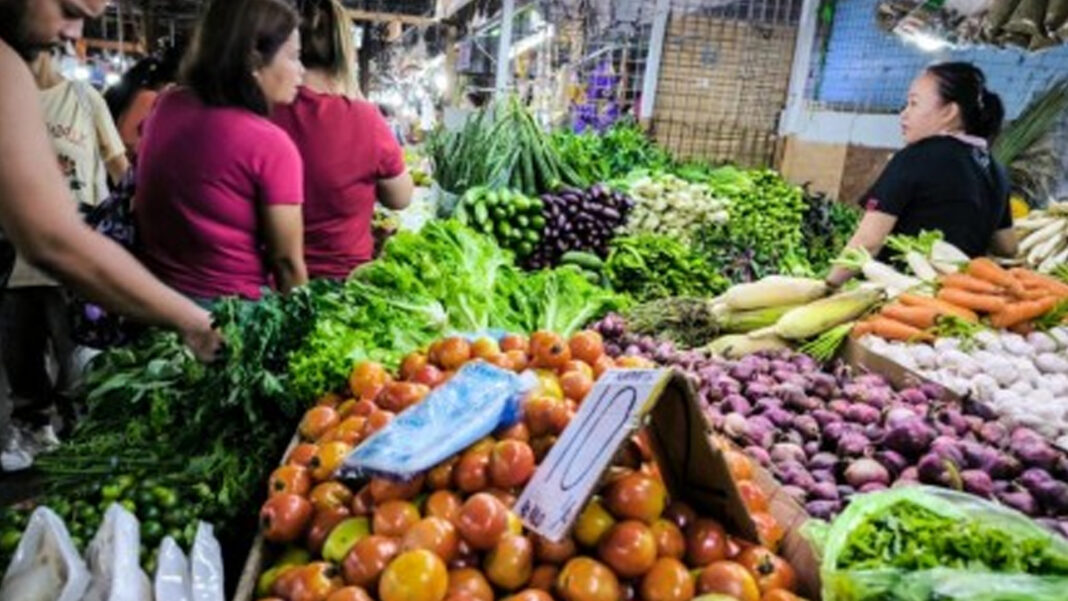The Philippines remains on track to achieving its food security targets under the administration of President Ferdinand R. Marcos Jr. despite various calamities in 2024, the Department of Agriculture (DA) said Tuesday.
In an interview, DA spokesperson Assistant Secretary Arnel de Mesa said this was made possible through the government’s intensified recovery efforts in the agriculture sector despite the “depressing” year that saw the sector reel from the combined effects of the El Niño phenomenon, La Niña, successive typhoons, Mt. Kanlaon eruption, African swine fever (ASF), and bird flu.
The recovery programs include continuous production support to farmers such as distribution of seedlings, fertilizers, machinery, and equipment; change of cropping calendar; promotion of alternate wetting-and-drying technology to minimize water requirement; adoption of flood-resistant and water-resistant rice varieties to cushion the impact of climate change; and the establishment of renewable agri-infrastructures like solar-powered irrigation systems and cold storage facilities.
De Mesa said the latest agricultural growth show how the sector has bounced back.
According to the Philippine Statistics Authority (PSA), the agriculture, forestry, and fishing (AFF) year-on-year growth accelerated to 2.2 percent for the first quarter of 2025, from 0.5 percent for the same period in 2024.
The DA official said this is nearing the government’s 3 percent agriculture growth target within Marcos’ term.
The main drivers of AFF growth are poultry and egg production, with 9.4 percent growth; followed by sugarcane and muscovado sugar at 19 percent; palay (unhusked rice) at 1.1 percent; support activities to AFF at 2 percent; and other animal production at 3.8 percent.
Other contributors are annual increases in fishing and aquaculture, other crops, banana, tobacco, coffee, pineapple, cacao, rubber, and cassava.
“Makikita natin na iyong growth ng sector ay on track para ma-meet iyong mga targets niya bago matapos iyong termino ng ating Pangulo (We can see the sector’s growth is on track to meet the targets before the end of the term of the President),” de Mesa said, ahead of Marcos’ fourth State of the Nation Address (SONA) on July 28.
“Despite din iyong mga naging problema natin noong nakalipas na mga taon, patuloy na nagpapakita ng paglago (Despite the problems that we have encountered past years, we are seeing a steady growth),” he added.
The first quarter’s increase nearly resembles the growth set at 2.3 percent for the same period in 2023, and higher than 0.18 percent in 2022.
“It reflects, it shows iyong paglago ng sektor (the growth in the sector) for the past 3 years,” De Mesa said.
The DA spokesperson underscored the Marcos administration’s focus on irrigation to further boost local production.
“Nakakatulong din iyong pagdami. Tumaas ng 44,000 hectares iyong na-develop na irrigable areas last year (The expansion is also helpful. The irrigable areas have increased by 44,000 hectares since last year),” he said.
For 2025, the DA is optimistic of reaching a record palay harvest of 20.46 million metric tons (MMT).
De Mesa said the continuous improvement of irrigation systems across the country will also help drive growth in corn and high-value crops.
Meanwhile, de Mesa said the DA continues to intensify efforts to address the impact of ASF in the hog sector, which incurred a -2.3 percent growth decline for the first quarter of 2025.
The DA-Bureau of Animal Industry (BAI) continues its rollout of government-controlled vaccination among healthy and ASF-negative hogs in the country using AVAC live vaccines while awaiting commercial approval from the Food and Drugs Administration (FDA).
The DA’s stringent border measures are also in place to prevent ASF spread nationwide.
As of July 11, there are 28 barangays in six provinces in the Cordillera Administrative Region (CAR), Central Luzon, Central Visayas, and Caraga with active ASF cases.
This is way lower than almost 600 affected barangays or active ASF cases in the country during the second half of 2024. (PNA)


